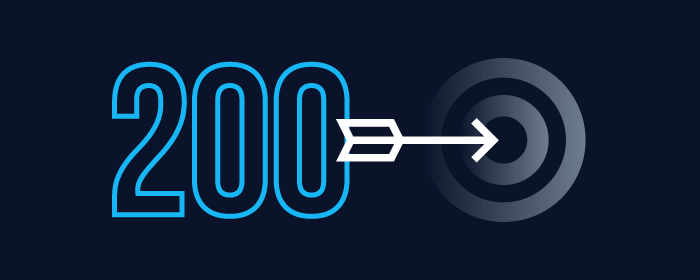
Blog
Machine Translation Report
What is the optimal MT Engine for you? Find out in the latest MT Report by Memsource.

A personal note from David Čaněk, Founder & CEO, on Memsource reaching the milestone of 200 employees worldwide.
I founded Memsource in August 2010 in Prague and grew to a team of 3 people by the end of 2010. Fast forward to 2021. We are a team of 200 people, comprising 32 nationalities based across Europe, America, and Asia.
Memsource started as a bootstrapped company and continued in this mode for the following ten years. Besides an initial loan that I took from a bank, using my Prague apartment as collateral, Memsource was able to grow thanks to the revenue we collected from our customers and being very lean.
Our first product direction was in fact an authoring tool. However, we quickly pivoted towards building a translation platform. Around 2010, the leading translation tools were mainly desktop-based with a few client-server products. We felt there was room for a cloud-based translation platform, as the move towards the cloud was just about picking up in the technology sector.
It seemed like a crazy idea to build a cloud-based product with a team of 3 (Michal Kebrt, Lukas Stanek, and myself). We knew that, but somehow we were able to push a first, very early version of Memsource in early 2011. We also hired our first sales person, Josef Kubovsky, and initially, it was a very tough sell to compete with the established players. When we approached a prospective client, the response would typically be: “There are so many translation tools out there—why are you building another one?” Our response was: “We think there is a place for a cloud-based tool”, and gradually, the localization industry agreed.
In 2012, we won our first paying customer, a translation company based in Russia, and then more followed. Another important event took place further up north in Hamburg, Germany in 2012: Frederik Vollert, Wolfram Graetz, and Tobias Schwab started building a software localization tool that later came to be known as Phrase. 9 years later, in 2021, Memsource and Phrase joined forces, but more on that later.
In the meantime, Memsource started gaining customers, and in 2013, it turned profitable. One of the many great things about SaaS businesses is the subscription revenue model. Customers prepaying for the service was the financing that powered our growth. We reinvested all of our excess cash into growing the team and grew from 3 people to 15 (still very lean) by 2014.
Initially, our customer base consisted primarily of translation companies—small, medium-sized, and large. Translation companies understood well the technology that we built and overall didn’t need a lot of hand-holding while using our product. Also, the sales cycle was relatively short. This was a good fit with the lean structure of our team that at that time lacked a proper onboarding team, for instance. By 2016, Memsource had become the global-leading CAT tool for translation companies in the cloud-based category. We grew faster than legacy desktop and client-server products that were clumsy to run and license.
It was reassuring to grow strongly in the translation company segment. However, we believed that Memsource should be a platform for the entire translation supply chain. That obviously involved global companies that were at the top of the chain. In 2016, we decided to focus on enterprise customers. We added new teams to support the enterprise focus, such as customer success, solution architects, onboarding specialists, and enterprise sales people. In 2017, Uber selected Memsource as its global localization technology vendor. Other global brands followed, such as Zendesk, Shopify, Supercell, Fujifilm, and many others.
Between 2017 and 2019, we grew the team from 50 to 100. We launched an in-house AI team, and in 2018 released our first AI-powered feature that identified non-translatable content. We found that a portion of the content that customers sent for translation was, in fact, not to be translated (e.g. product codes, some names, email addresses, URLs, etc). AI identified this content automatically, sometimes significantly reducing the overall content for translation. This feature, patented in the US, was followed by a number of additional AI-powered features that primarily focused on increasing localization efficiency, such as: automated linguist assignment, machine translation quality estimation, selection of the most optimal machine translation engine for customer’s content, cleaning of training data for custom machine translation engines, etc.
We have continued our growth journey in a bootstrapped mode, growing on average 60% year-on-year up until July 2020 when we decided to partner with The Carlyle Group, a global investment firm with over $260 billion assets under management. At the end of 2020, and with Carlyle’s backing, we joined forces with Phrase, a Hamburg-based startup and an incredible team that has developed a leading software localization platform. In 2021, we grew the combined team to over 200 people. Together with the Phrase team, we have started a new chapter in our history with the aim to transform the localization industry.



